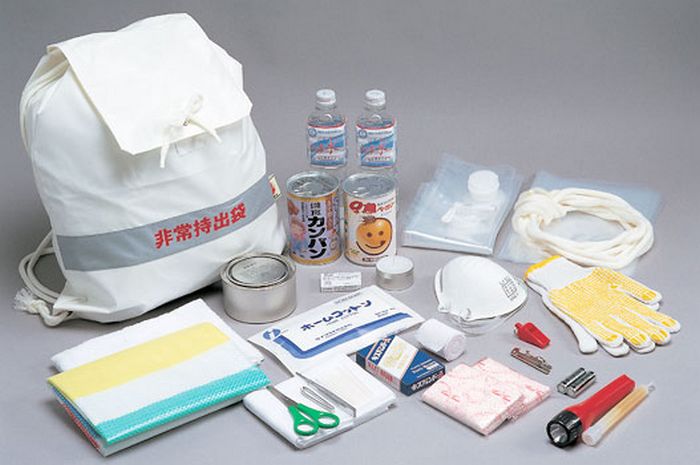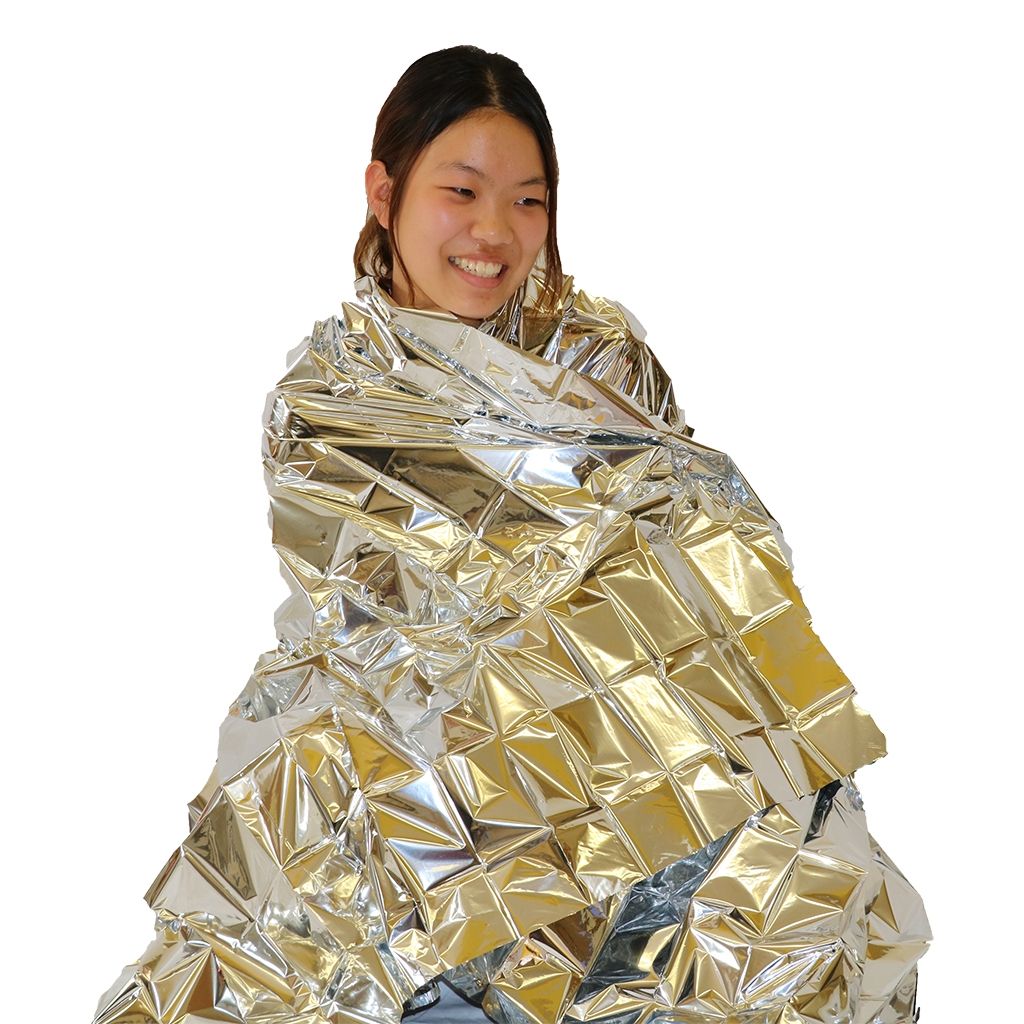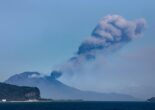An earthquake emergency kit is an essential item to have if you’re living in Japan. Big earthquakes may not happen every day but it’s certainly worth the peace of mind to be prepared for one when it does.

It’s well known that earthquakes happen frequently in Japan. It’s position on the Pacific Ring of Fire, where a number of tectonic plates meet, mean that earthquakes are just a part of living here. In fact, it’s quite difficult to spend a serious length of time in Japan without encountering at least one. Thankfully the vast majority of these are small and over in a matter of seconds. If you’re not used to earthquakes, you might not even realise one is happening. My first earthquake resulted in me spending way too long trying to figure out if one of the legs on my desk was suddenly shorter than the others because I just didn’t understand why it had been shaking.
Earthquakes are just one of those things you get used to and don’t really think about too much while living in Japan. But there is unfortunately always the chance of a big one. An earthquake can happen at any time and preparation goes a long way. All Japanese households prepare an earthquake emergency kit in case they suddenly have to evacuate to a safer place. So what should you include in an earthquake emergency kit of your own?
Japanese Emergency Earthquake Kit
1. A Backpack
First of all, you need something to carry your emergency kit in if you have to evacuate in a hurry so a backpack is the best choice. It doesn’t have to be particularly fancy, just something large and sturdy enough to carry everything you need and easy to pack.
2. Food and Water
These are probably the most obvious thing to include in your kit. Water is absolutely essential but there are a lot of different opinions on how much water you should have in your earthquake emergency kit. In the event that you have to evacuate urgently, keeping your kit light enough to carry is also a big factor so probably the best estimate I’ve seen on how much water to have on hand is 1.5 litres per person.

This is based on a minimum of 500ml of water per day for 3 days. Of course, the more you have the better so if you can carry more it’s certainly not a bad thing. In regards to food, this should be long-life items like canned or dried food. Things that keep for a long time and don’t require cooking are ideal. With food, there isn’t really a suggested amount to carry. An earthquake kit is generally only meant to get you through a few days at most so pack enough to get you through, not necessarily for complete meals. You should also check the food in your kit at least once a year to make sure it hasn’t expired.
3. Flashlight and Radio (and batteries)
Also very important. In the event of a major earthquake there will likely be no power so you’ll need some way to see. A regular flashlight is ok for this but you might also consider a headlamp to keep your hands free. A radio is essential for keeping track of emergency announcements and information about where to seek shelter. Make sure to do regular checks on these to ensure the batteries don’t need to be changed. It’s also a good idea to have some additional batteries packed in case you need to swap them out suddenly.
4. First Aid kit and Medicine
A small, easy to carry first aid kit is a must as well as any prescription or non-prescription medicines you might need.
5. Clothing – Gloves, Masks, Socks, Towel and Rain Gear
The gloves should be thick work gloves for protecting your hands in case of broken glass and other fragments. The mask is for dust particles that may be in the air following an earthquake but also for protection against coronavirus if you will be staying in an emergency shelter with other people. As you never know what kind of weather will be happening when an earthquake hits, the other items are for dealing with more severe weather conditions.
6. Toiletries
This includes items like a toothbrush and toothpaste, wet and regular tissues and toilet paper. All of these are little essentials that will go a long way to providing some comfort in a difficult time.
7. Emergency Blanket

Those silver blankets are an excellent addition to any emergency kit. They’re lightweight, wind and waterproof and very efficient for keeping warm.
8. Cash
There’s always a possibility that you’ll need money to pay for food or other items and more than likely you’ll be unable to access ATMs. It’s good to have a little bit of cash including bills and coins for emergency use.
9. Phone Charger
Everyone relies on their phones a lot nowadays and that’s no exception in an emergency where it becomes essential to keep in touch with loved ones or navigating using GPS. Emergency information is also sent via phone networks in Japan. The best option to keep your phone charged is a portable power bank but if you don’t have one of these you may have other opportunities to charge your phone elsewhere so a standard charger is essential.
10. Portable Toilet
Portable toilet kits can be purchased in most hardware stores or places that sell camping supplies. In the event of a major earthquake, water supplies will possibly be shut down meaning public toilets won’t be working. These disposable toilets can be bought in packs and will make things a little more comfortable.
Additional Items
Aside from the above items, there are a lot of additional things you can include depending on the size of your bag, how much you’re comfortable carrying in a hurry and, of course, the needs of your family. Things like diapers for babies and pet food for pets might also be essential items. It’s also a good idea to keep some plastic bags in your kit for waste disposal purposes. One other item that seems to be quite common is an emergency whistle in case you need to signal for help.



